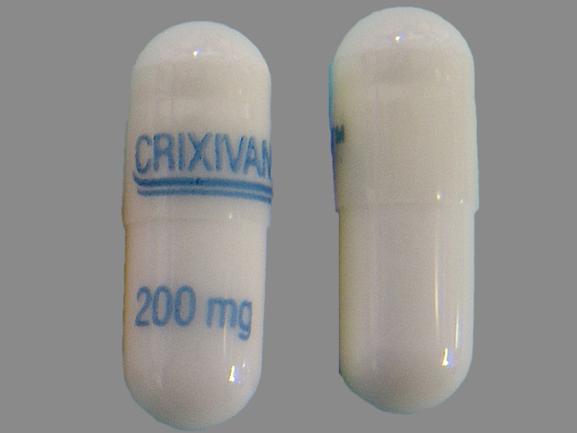Crixivan Disease Interactions
There are 3 disease interactions with Crixivan (indinavir).
Indinavir (applies to Crixivan) nephrolithiasis
Major Potential Hazard, High plausibility. Applicable conditions: Dehydration, History - Nephrolithiasis
Crystalluria and nephrolithiasis may occur during treatment with indinavir. The cumulative frequency of nephrolithiasis is substantially higher in pediatric patients (29%) than in adult patients (12.4%; range 4.7% to 34.4% across individual trials) and increases with duration of exposure to indinavir; however, the risk over time remains relatively constant. The incidence is also higher when indinavir is used in combination with ritonavir than when used alone at 800 mg three times a day. In some cases, nephrolithiasis/urolithiasis has been associated with renal insufficiency or acute renal failure and pyelonephritis with or without bacteremia. Therapy with indinavir should be administered cautiously in patients with a current or past history of nephrolithiasis. It is crucial that patients receive adequate hydration. Generally, at least 1.5 L (approximately 48 oz) of fluid per day is recommended for adults during indinavir therapy. Those who are dehydrated may be at increased risk and should be encouraged to consume additional amounts of liquid or given intravenous fluid if necessary. All patients receiving indinavir should be instructed to seek medical attention if they experience potential signs and symptoms of nephrolithiasis/urolithiasis such as flank pain, hematuria, dysuria, anuria, and urinary urgency. A brief interruption (e.g., 1 to 3 days) or discontinuation of therapy may be required.
Indinavir (applies to Crixivan) liver disease
Moderate Potential Hazard, High plausibility.
Indinavir is primarily metabolized by the liver. Patients with liver disease may be at greater risk for adverse effects from indinavir due to decreased drug clearance. Therapy with indinavir should be administered cautiously in patients with liver disease. A dosage reduction to 600 mg three times a day is recommended for patients with mild to moderate hepatic insufficiency due to cirrhosis.
PIs (applies to Crixivan) hyperglycemia
Moderate Potential Hazard, Moderate plausibility. Applicable conditions: Abnormal Glucose Tolerance, Diabetes Mellitus
New onset diabetes mellitus, exacerbation of preexisting diabetes mellitus, hyperglycemia, and some cases of diabetic ketoacidosis have been reported during postmarketing surveillance in HIV-infected patients treated with protease inhibitors. Some patients required either initiation or dosage adjustments of insulin or oral hypoglycemic agents for treatment of these events. In some cases, hyperglycemia persisted despite discontinuation of protease inhibitor therapy. A causal relationship has not been established between protease inhibitor therapy and these events. Monitoring patients for hyperglycemia, new onset diabetes mellitus, or exacerbation of diabetes mellitus should be considered during protease inhibitor therapy.
Crixivan drug interactions
There are 515 drug interactions with Crixivan (indinavir).
Crixivan alcohol/food interactions
There is 1 alcohol/food interaction with Crixivan (indinavir).
More about Crixivan (indinavir)
- Crixivan consumer information
- Check interactions
- Compare alternatives
- Reviews (1)
- Drug images
- Side effects
- Dosage information
- During pregnancy
- Drug class: protease inhibitors
- Breastfeeding
Related treatment guides
Drug Interaction Classification
| Highly clinically significant. Avoid combinations; the risk of the interaction outweighs the benefit. | |
| Moderately clinically significant. Usually avoid combinations; use it only under special circumstances. | |
| Minimally clinically significant. Minimize risk; assess risk and consider an alternative drug, take steps to circumvent the interaction risk and/or institute a monitoring plan. | |
| No interaction information available. |
Further information
Always consult your healthcare provider to ensure the information displayed on this page applies to your personal circumstances.


